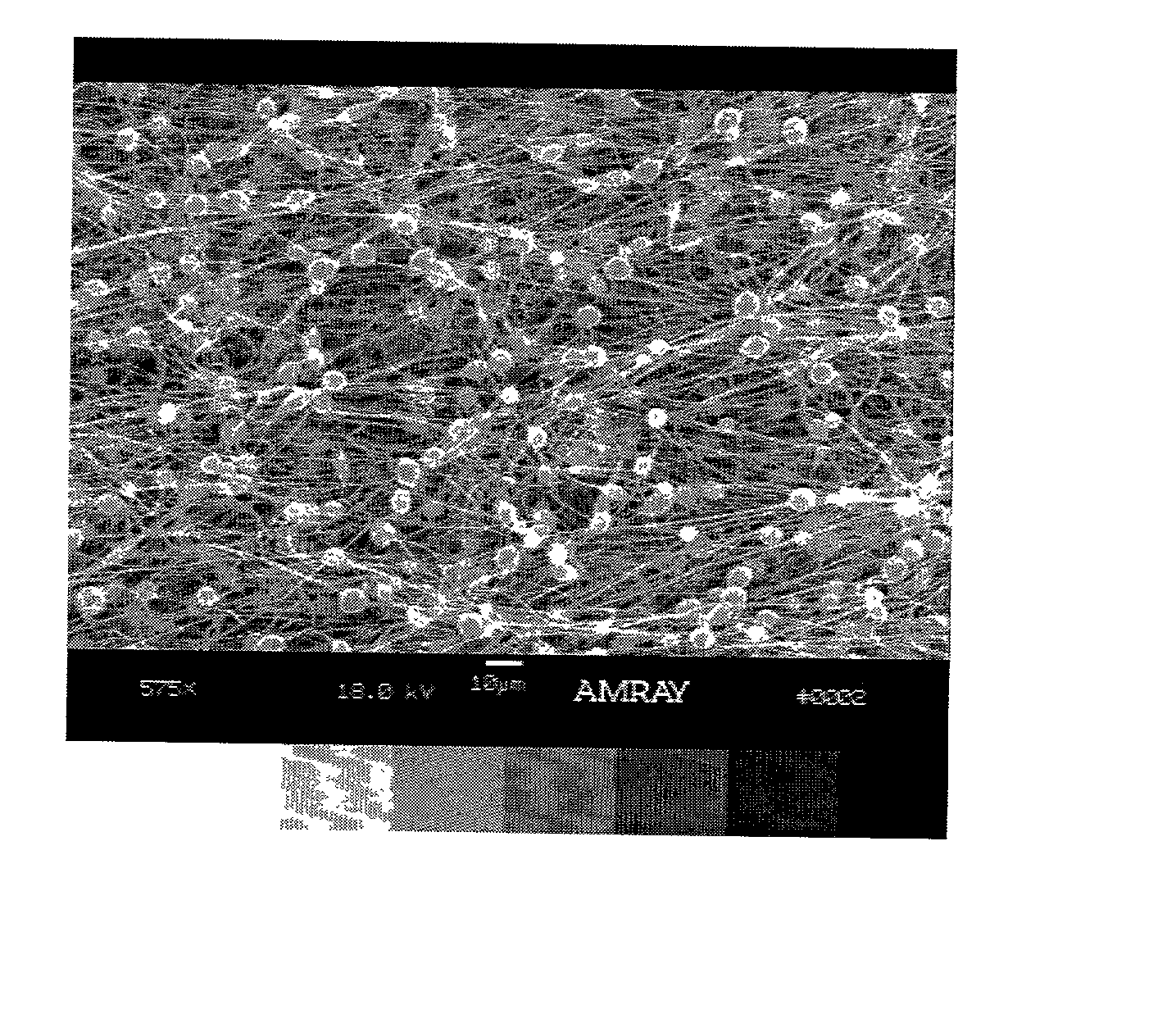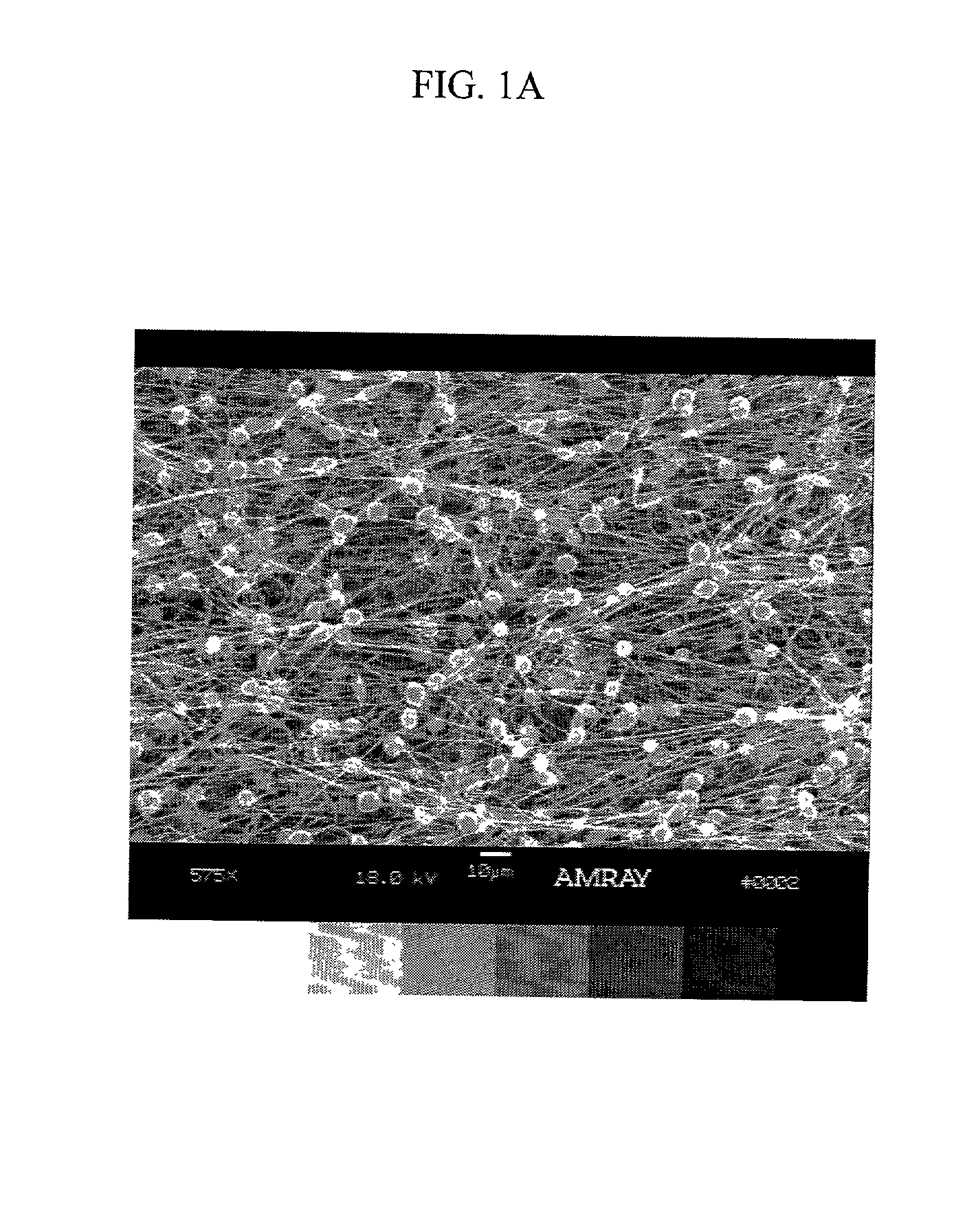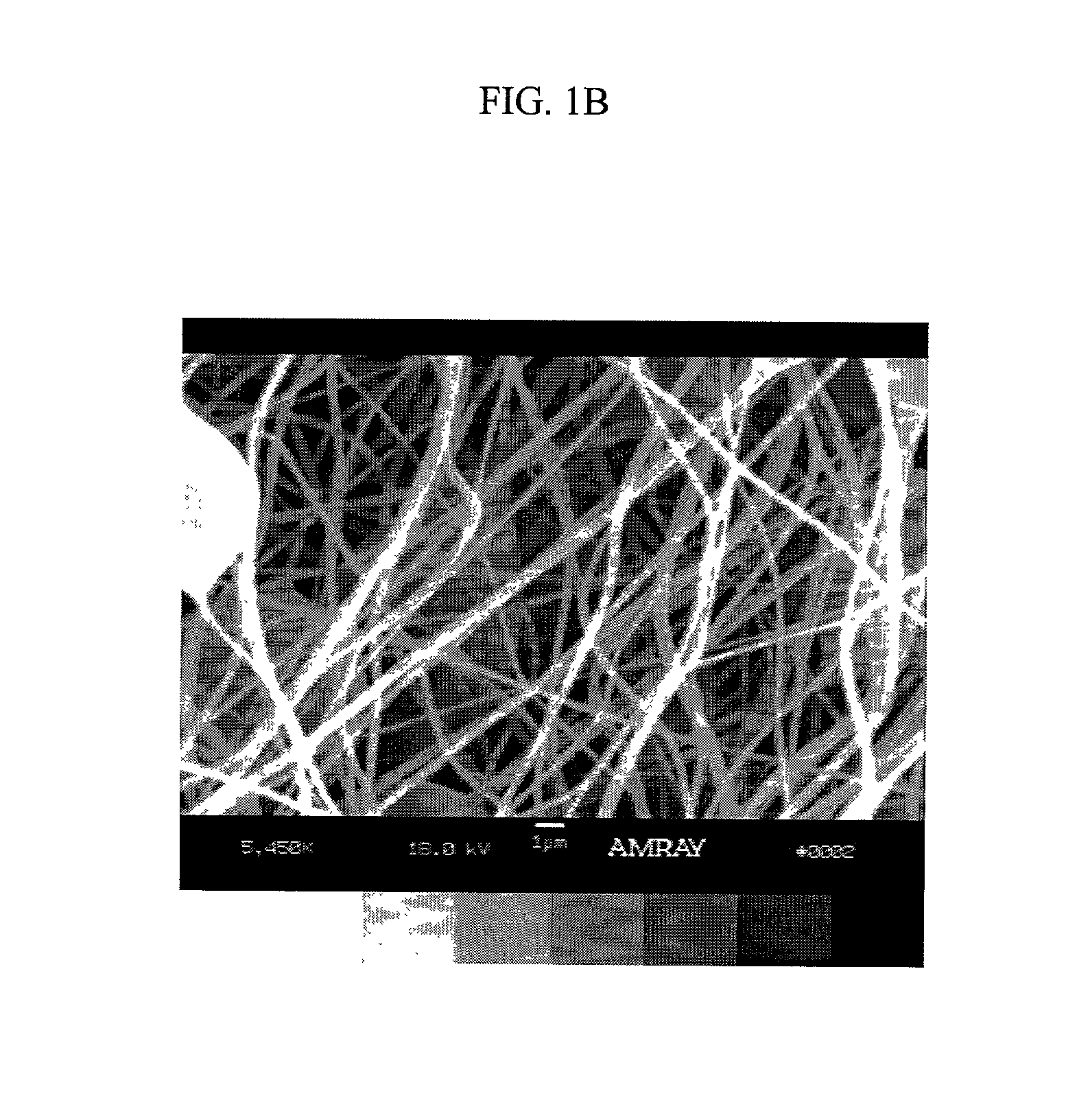Vascular graft having a chemicaly bonded electrospun fibrous layer and method for making same
a vascular graft and fibrous layer technology, applied in the field of implantable prostheses, can solve the problems of stiff prosthesis, adverse effects on pre-clotting or coating of graft, adverse effects on handleablity,
- Summary
- Abstract
- Description
- Claims
- Application Information
AI Technical Summary
Benefits of technology
Problems solved by technology
Method used
Image
Examples
example two
[0053] All the parameters were kept same as in example one except two 18-gauge metal needles were used and Trifluoroethanol was added to spinning solution of example one to control the evaporation of the spinning solution. The weight ratio of the spinning solution of example one and Trifluoroethynol was nine to one. Compared with the 21-gauge needle used in example one, the 18-gauge needles produced larger fibers. Compared with the 15-gauge needle in example one, use of the 18-gauge needles resulted in a lower level of residual solvent. Trifluoroethanol (1 to 9 of HFIP) was added to slow down the evaporation of the spinning solution (TFE has a boiling point of 77-80 degree Celsius, HFIP has a boiling point of 59 degree Celsius). Adding TFE raised the level of residual solvent, and thus improved bonding of electrospun fibers to the graft.
example three
[0054] A 21-gauge metal needle was used to deliver pure solvent HFIP (Hexafluoro-Isopropanol) onto a surface of a Dacron graft for approximately one minute. After which a switch was made to a pair of syringes filled with the spinning solution, as detailed in example one. The spinning solution of example one was electrospun for approximately four minutes.
[0055] FIG. 1A is a SEM microphotograph, magnification .times.575, of the electrospun fibrous layer created in example one. The fibrous layer has an average fiber size of approximately 500 nm with interfiber spaces of approximately 1-5 microns. Note that polymer droplets, in the range of approximately 5-10 microns, formed due to the excess of residual solvent, provide fiber-to-fiber bonding and fusion. Note also the random orientation of the fiber bundles and intertanglement of the individual fibers.
[0056] FIG. 1B is a higher magnification (.times.5450) SEM microphotograph of the same electrospun fibrous layer as shown in FIG. 1A. No...
PUM
| Property | Measurement | Unit |
|---|---|---|
| diameter | aaaaa | aaaaa |
| size | aaaaa | aaaaa |
| distance | aaaaa | aaaaa |
Abstract
Description
Claims
Application Information
 Login to View More
Login to View More - R&D
- Intellectual Property
- Life Sciences
- Materials
- Tech Scout
- Unparalleled Data Quality
- Higher Quality Content
- 60% Fewer Hallucinations
Browse by: Latest US Patents, China's latest patents, Technical Efficacy Thesaurus, Application Domain, Technology Topic, Popular Technical Reports.
© 2025 PatSnap. All rights reserved.Legal|Privacy policy|Modern Slavery Act Transparency Statement|Sitemap|About US| Contact US: help@patsnap.com



